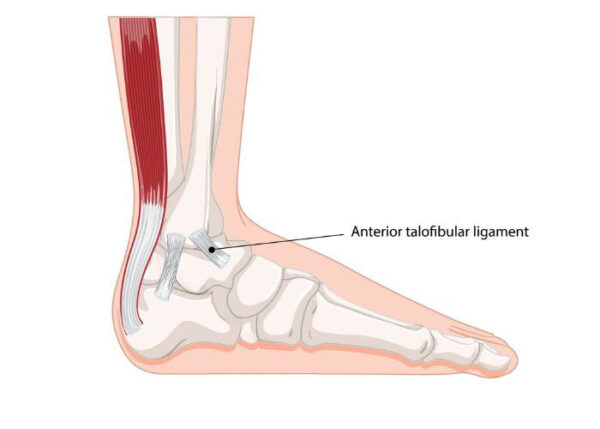Anterior Talofibular Ligament Tear Specialists
The anterior talofibular ligament (ATFL) is the most commonly injured ligament of the ankle joint. Athletes are the most at risk of injuring this ligament which can cause ankle instability, pain and the inability to bear weight on the ankle. Anterior talofibular ligament specialists, Doctors Thomas Haytmanek and Jonathon Backus have diagnosed and treated many patients from Vail and Frisco, Colorado, as well as Denver, Boulder, and surrounding Summit County areas who have experienced an ATFL injury or tear. If you believe you may have injured foot or ankle, contact The Steadman Clinic’s Sports Foot and Ankle team today!

What is an anterior talofibular ligament tear?
The anterior talofibular ligament (ATFL) is the most commonly injured ligament of the ankle joint. This ligament is found on the lateral portion of the ankle and connects the lateral malleolus to the neck to the talus. The anterior talofibular ligament’s main responsibility is to the prevent the foot from sliding forward. Athletes are the most at risk of experiencing an anterior talofibular ligament tear. These injuries occur when the ankle joint is inverted while the foot is flexed down towards the ground. Dr. Thomas Haytmanek and Dr. Jonathan Backus specialize in treating anterior talofibular ligament tears for patients from Vail and Frisco, Colorado, as well as Denver, Boulder, and surrounding Summit County areas.

What are the symptoms of an anterior talofibular ligament tear?
There are three grades of low ankle sprains involving the anterior talofibular ligament. Grades 1 and 2 describe stretching of the ligament without tearing and Grade 3 involves a complete tear of the anterior talofibular ligament. Individuals with an anterior talofibular ligament tear most commonly report significant pain and swelling surrounding the ligament. Some other common symptoms of an anterior talofibular ligament tear include:
- Pain with weight-bearing or unable to bear weight at all
- Instability of the ankle joint
- Bruising at the ligament tear site
- A “popping” or “catching” sensation of the lateral ankle
How is an anterior talofibular ligament tear diagnosed?
A comprehensive medical history and physical examination of the patient is sufficient in diagnosing an anterior talofibular ligament tear. The lateral ankle ligaments undergo a variety of specific maneuvers to evaluate the integrity of each ligament. A positive anterior drawer test suggests injury to the anterior talofibular ligament and the calcaneofibular ligament. Patients with partial anterior talofibular ligament tears may demonstrate more ankle joint stability than those with complete ruptures of the anterior talofibular ligament. Many patients also sprain the calcaneofibular ligament and posterior talofibular ligament at the same time. X-ray imaging can be useful to rule out distal fibula avulsion fractures or damage to other nearby bony structures. Advanced diagnostic imaging, such as magnetic resonance imaging (MRI), may be warranted in patients who do not improve after 6 to 8 weeks of conservative medical management. This advanced imaging can show the degree of injury to each ligament as well as damage to other soft tissue structures of the ankle joint.
What is the treatment for an anterior talofibular ligament tear?
Non-surgical treatment:
Conservative treatment of patients with an anterior talofibular ligament tear is often all that is needed to treat these types of injuries. Early intervention leads to the best outcomes, therefore it is important to be evaluated by a foot and ankle specialist as soon as possible following the injury. Bracing the ankle joint for a short period of time, whether in a walking boot, short leg cast, or ankle brace has proven to be beneficial in treating anterior talofibular ligament tears. Consistent rest, ice, elevation, and compression can also aid in reducing pain and swelling with these injuries. A physical rehabilitation program focused on muscle strengthening has also been shown to help patients return to physical activities.
Surgical treatment:
Patients who do not improve with conservative management, or some patients who have a complete rupture of the ligament, may require surgical intervention to restabilize the ankle joint. Surgical intervention may be needed to repair the ATFL ligament tear. The damaged portions of the ligament are cleaned and the remaining healthy tissue is sutured back together or reattached to the bone. The exact incision and technique used depend on the nature of the tear. A tendon graft may be required for ligament reconstruction in patients with irreparable damage to the calcaneofibular ligament.
